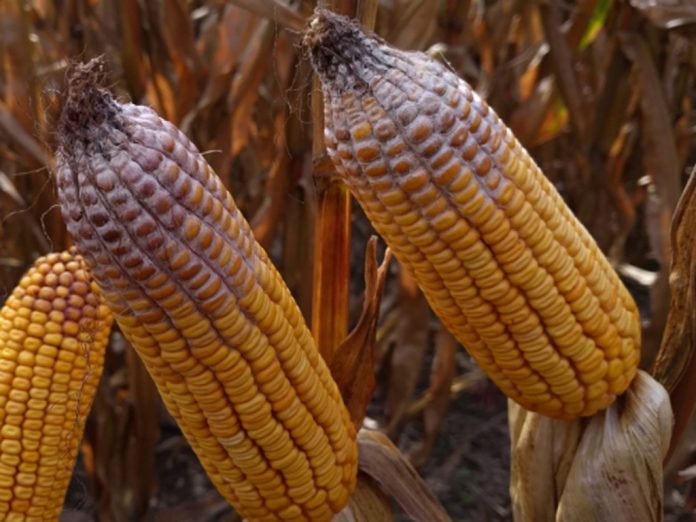COLUMBUS — Late-planted corn and soybeans could be vulnerable to higher-than-normal levels of crop diseases this year, experts from The Ohio State University warn.
Risks
When sown one to two months later than usual, corn and soybeans stand a greater chance of succumbing, especially, to fungal diseases.
Dry weather across much of Ohio since July has helped stave off some disease spread because fungal diseases need moisture to thrive.
Still, during a year when late planting has already limited the yield potential on crops, it’s critical to be watchful for other threats too, including all types of diseases, molds and insects, advise experts with Ohio State’s College of Food, Agricultural and Environmental Sciences.
Diseases
Fungal diseases that can infect either soybeans or corn can survive through the winter on the crop residue left in a field after harvest, said Pierce Paul, a specialist in corn and small grain diseases with CFAES.
Spores of the pathogens that cause the diseases form in the spring and spread. Delayed planting allows more time for the spores to multiply.
Not only are more spores potentially available to infect a new corn or soybean plant, but the plant, if sown later, is more likely to be infected in an early growth stage, Paul said.
Corn growers should be watchful for signs of gray leaf spot disease, the most common corn disease across the Corn Belt, Paul said. Northern corn leaf blight and tar spot, a new disease in Ohio, are also potential threats to this year’s crop.
“People need to be vigilant. This is the time to walk your fields and see if there’s signs of disease,” Paul said.
Late planting
In Ohio and across the Midwest, both corn and soybeans were planted one to two months late as a result of unprecedented rainfall levels. Many acres were not planted with either crop, and instead, will be planted with cover crops.
Insurance claims will also be filed to compensate for the profit loss. Claims will be made on about 20% of Ohio’s acres that typically hold cash crops.
Soybean threats
In soybean fields, growers should be most concerned about frogeye leaf spot because the incidence of that disease has been increasing every year in Ohio, said Anne Dorrance, a soybean pathologist with CFAES.
Some varieties of soybeans are susceptible to the disease, she said.
If frogeye leaf spot infects a soybean plant just before or during the growth of the bean pod, “we could have significant yield losses,” Dorrance said.
Cercospora leaf blight and downy mildew, a water mold, are also potential threats to this year’s crop along with phomopsis, which was a major problem last year.
“We even have soybeans that were planted at a normal time this year that are already showing symptoms of fungal diseases,” Dorrance said.
Some varieties of corn and soybeans are resistant to various diseases, so growers would benefit from knowing which fungal diseases their planted variety can fend off. But resistance does not mean immunity. It only means that damage to a resistant plant will be milder.
Scouting
“Walk your fields,” Paul said. “Walk more frequently this year to see what’s there and how it’s progressing.”
Besides watching for signs of diseases, growers would also benefit from scouting their fields for damage from insects.
“With dry weather, plants tend to grow slower, and insects might be able to keep up with the crop’s growth,” said Harold Watters, an agronomy field specialist for Ohio State University Extension. But before investing in pesticides, growers should determine how big the problem is, he said.
“I would caution folks not to overspend,” Watters said. “On the other hand, during a year when yields are already expected to be lower, we do need to protect what little we have.”
For more information about disease or insect threats on late-planted crops, visit the following. www.go.osu.edu/corndiseasehelp










